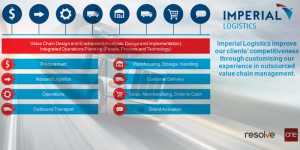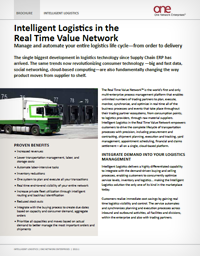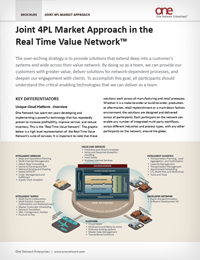Release 18.0 brings some major improvements and benefits to our customers in the Logistics industry
Highlights of 18.0 for Logistics Service Providers
Innovative end-to-end solution that provides autonomous orchestration of planning and execution across many parties (LSPs, Carriers, Shippers, Sellers, Buyers, Domestic, International, etc.). Provides predictive capabilities for ETAs integrating with replenishment Supply Demand Match. Provides proactive ETA warnings and agent based autonomous resolution.
Smart agent based algorithms learn transportation network and flow patterns to automatically generate clustered sub-networks. It is like having a transportation network design expert refine and optimize your routes and operations on an ongoing basis.
Tactical Plan
Tactical Plan is a tool to analyze a DC’s operational capacity requirements for the next week or two by taking into account order forecast, shipments and movements into consideration. It provides a comprehensive timeline view of activities across transportation orders, transportation order forecast, outbound orders, dock capacity, labor capacity, marshalling lanes, etc., to help optimize staging of warehouse to meet with logistics execution.
Transportation Planning Workbench and Activity Monitoring
This is a tool to adjust the optimal loads generated by the Planning engine, and/or to create new loads manually in compliance with planning policies. Operators can adjust the loads in real-time with a consolidated view of vehicle stops, a Gantt view of past and future assignments to the vehicle, and a geo view of vehicle routes. The resulting changes will be fully compliant with the planning and vehicle operational constraints (such as site work hours, flexibility, DOT constraints, etc.).
Buyer Orchestrator / Supplier Orchestrator
The Orchestrator Organization works on behalf of Retailer or Supplier or Both to orchestrate the supply chain process including inventory planning at the customer warehouse/DC, managing and forecasting demand at their customer stores/DC and propagating and replenishing the demand. The Orchestrator collaborates on behalf of their customers/Suppliers on Orders and owns the Transportation and Financial while working with Carriers. Orchestrator Organizations can have the ability to view and manage the master data on behalf of their partners under partner’s value chain.
Sub Regions
We are making a limited release of new learning agents that employ a Particle Swarm Optimization technique to cluster data and seek opportunities to split the network into sub-regions. 64-bit support has also been added. These enhancements help improve the scalability of our routing algorithms being applied to large, complex instances of the Vehicle Routing Problem and its many variants.
Client Quoting
Client Quoting is a marketplace exchange for cars needing moves and for shippers offering moves.
Collaboration on Deployment Order
Shipper and Consignee and Plant to Plant transfer – Shipper and Consignee can now collaborate on quantity and dates for deployment orders.
Order Update Alerts
Alerts sent when order parameters (such as service level mode, payment terms, etc.) are updated. 18.0 added alerting capability on all order types when any field is modified. This feature allows interested parties to subscribe for email notifications. The user can select the fields that they are interested in and can set thresholds on the changes for which they want to be notified.
For example, the user can subscribe to an alert for use cases such as:
- Alert me when the service level changes
- Alert me when the price changes and the change is above X%.
Split Order Functionality
Split Order Functionality is used by the Global Supply-Demand Match and allows orders to be split.
Accessorial Rate Collaboration in RFQ
Accessorial Rate Collaboration allows carriers to respond to Accessorial rates.
Ocean Container Tracking
- Broad support for global logistics, with ability to track individual containers, inco terms, integration with ocean line tracking, Assign a Container Move to a Movement
- Create a Demurrage Alert Subscription
- Create a Detention Alert Subscription
- Create a Packing List for a Container Movement
- Create a Return Move from the Containers Tab
- Defining Container Requirements for a New Shipment
- Defining Per-Equipment Cost Rating in Base Rates
- Manually Creating a Container Move
- View Booking Response Details from the Containers Tab
- View Container Events from the Containers Tab
- View Container Move Cost Estimates
Recommended Resources for Logistics Service Providers
 Webinar: Demand-Driven Logistics for 3PL/4PLs with Resolve
Webinar: Demand-Driven Logistics for 3PL/4PLs with Resolve
Global logistics provider Resolve, reveals how they have improved their results, expanded their solution offering, and simplified their technology Brochure: Intelligent Logistics
Brochure: Intelligent Logistics
Drive the complete lifecycle of transportation processes with precision, including procurement and contracting, shipment planning, execution and tracking, yard management, appointment scheduling, and financial and claims settlement – all on a single, cloud-based platform. White Paper: Top Opportunities for Logistics Service Providers
White Paper: Top Opportunities for Logistics Service Providers
How logistics service providers can conquer today’s complexity, differentiate their services, and surge ahead of competitors


